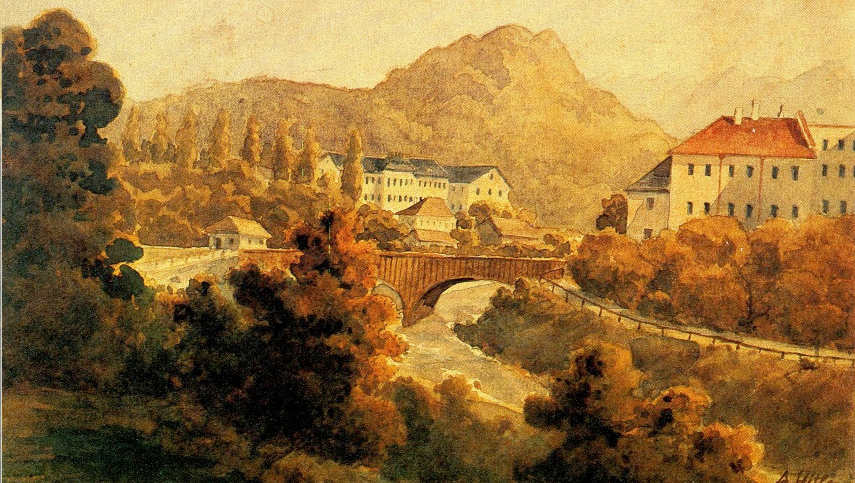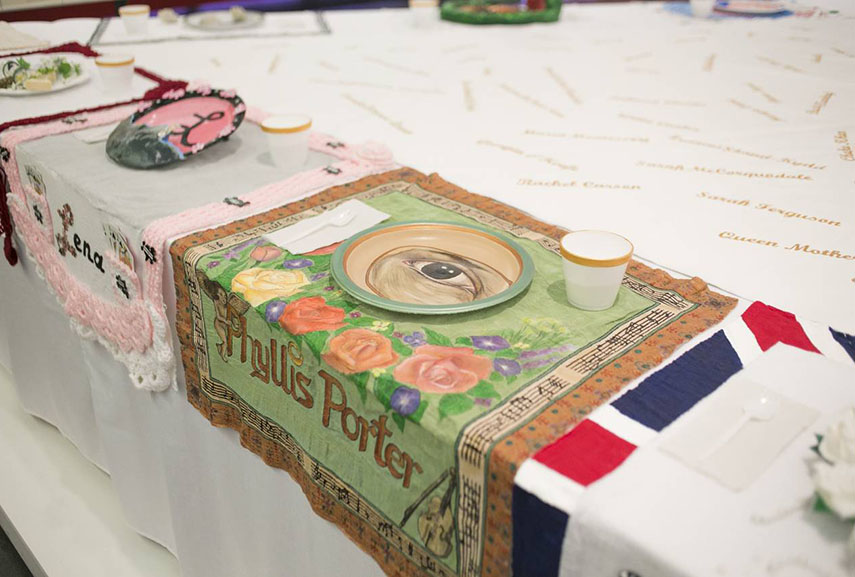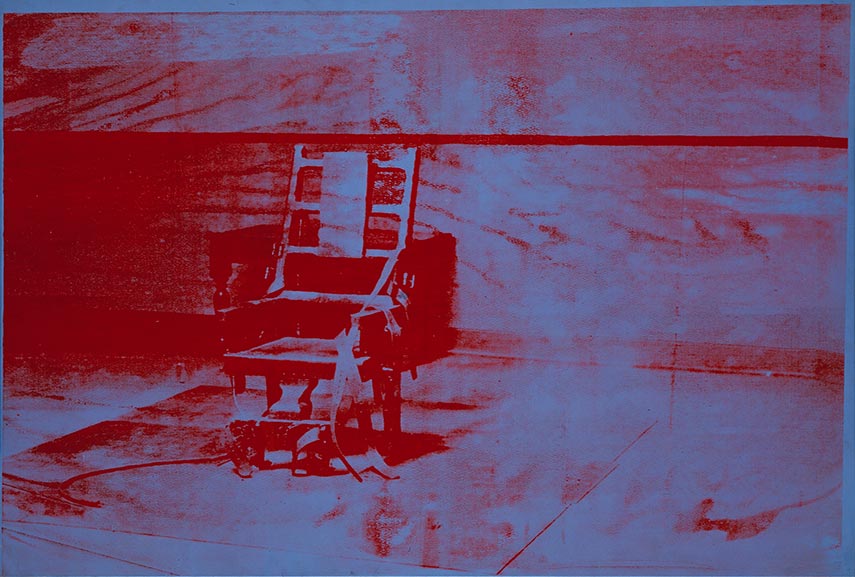Pieces of Art That Make You Think Art That Represents Leader
15 Influential Political Art Pieces
Artwork(due south) In Focus, Top Lists, Fine art History, Socially Engaged Fine art
What is political art? Is it unlike than the fine art itself and could it be the art beside the politics, as we know the political truth is the ruling mechanism over all aspects of humanity? From its beginnings, art is inseparable from the societies and throughout its history authors always reflected the present moment bringing the creative truth to the full general public. For Plato and Aristotle, mimesis - the human action of artistic creation is inseparable from the notion of existent earth, in which fine art represents or rather disputes the diverse models of beauty, truth, and the good within the societal reality.
Hence, position of the art sphere is semi-autonomous, as information technology is independent field of cosmos freed from the rules, function and norms, but on the other hand, art world is deeply connected and dependent from artistic production, means of curating and display as well as socio-economical conditions and political context.

The Realm of Political Art
In times of big political changes, many art and cultural workers choose to reflect the context within their artistic practices and consequently to create politically and socially engaged art. Art could be connected to politics in many different ways, and the field of politically engaged art is rather wide and rich than a homogenous term reducible to political propaganda. At that place are many strategies to reach the land of political engagement in art and it includes the broad calibration of artistic interventions from bare gestures to complex conceptual pieces with direct political engagement intended to factual political changes. But when disputing politically engaged art, we must non forget that art is not and could not exist the mere means of political action nor reduced to this specific function; although it could be an active part of activist practice.

Beyond the Aestheticization of the Politics
In the 20th century, the aestheticization of the politics was heavily criticized every bit a try to conceive regular practices of life and societal behavior as innately artistic, and to introduce politic values to art, by structuring it as an fine art form in order to normalize emancipatory or revolutionary practices and enclose information technology to the democratic field of art. This was the concept first coined by Walter Benjamin and later developed in the thought of Frankfurt Schoolhouse. It was too the philosophical reaction to the appropriation of the art past the Fascist regimes in Europe. In the low-cal of this theory, the polar opposite of these practices of aestheticization would exist the term of the politicization of aesthetics – a kind of revolutionary praxis of rethinking the depoliticized field of art production and calculation the wider political or rather an emancipatory character to the art work.

Liberation of Fine art
The main idea behind the liberating art from the corrupting politic movements such equally Fascism, Nazism or whatsoever other reductive and destructive social agenda, is to reclaim its autonomy once again. For any creative work is crucial to exist free from the function and especially transgressing its subordinate position when fine art is reduced to the political tool of ruling mechanism. The very act of negation or disagreement with the negative or harmful within the politics is crucial for understanding the core value of political artists and the politically engaged art in whole. As artistic practice is the act of cosmos, intervention into the torso of real earth, fine art, as a form of social action, is a very mighty tool of the political imagination, past (re)presenting the world, not in a sudden, but in some further or better status.

Political Office of Art
When questioning the role of art today, nosotros must be enlightened of the illusive borders between art and life, art and media, fine art and society, as well as art and activism. In and then many cases of artist works, information technology is hard to formulate not just the notion of art just fifty-fifty its position within the society. In contemporary societies, it is important to carelessness the romantic visions of art's mission, but at the same time to insist on the constant questioning dominant politics within the art, maintaining and fight for the inherent artistic freedom of speech and expression. The role of political art has always been crucial since it is i of rare uncorrupted forces of emancipatory action and battlefield of the crucial dispute what is and what could be dazzler, truth, and the skilful.

Influential Political Artworks
In the class of art history there are many examples art was the crucial reflection of political context. Moreover, analyzing and disputing the art pieces, we larn about life and circumstances from which we are far abroad in space or time. The art pieces were critical or undue to the dominant values of its time, we often understood as a political avant-garde, the announcement of the political changes that followed. Here, we would like to present different politically engaged art works, trying to display the wide specter of political action within the field of art, without pitfall of losing the fine art qualities and becoming the political agenda itself. The selection nosotros made addresses the questions of wars and political conflicts, rise of fascism, revolution and social change, also as man rights activism, feminism, autonomy of art or various problems of artistic production and work itself. Methodologies, media or artistic strategies are numerous in political art and proving that politically committed artworks and the work of political artists in general is not reducible to propaganda.

Featured images:Norman Rockwell - The Problem Nosotros All Live With, 1964; Pablo Picasso - Massacre in Korea, 1950; Dmitri Vrubel - The Kiss, 1990; Banksy - Flower thrower, 2003; Ai Weiwei – With Flowers, 2013; Yoko Ono – Sky Landing, 2016.
Vladimir Tatlin - The Monument to the Third International from 1917
Tatlin'southward Constructivist tower was planned to be the moving sculpture of the Revolution, the dynamic metaphor of insurgence the modernity, revolutionary thinking and the new world social club. Besides its monumental and poetic value, the construction should accept architectural functions and could have been used for conferences and unlike governmental functions. Due to economic crash in mail-revolutionary Russia, the Monument to the Tertiary International has been never congenital but its smaller size models are situated in Stockholm, Moscow and Paris.
Featured image: Vladimir Tatlin - The Monument to the 3rd International, 1917
Diego Rivera - Man at the Crossroads from 1934
Man at the Crossroads was a landscape by Diego Rivera in the Rockefeller Middle, New York. The process of painting and the life of the fresco painting itself raised a big controversy since Rivera included images of V.I. Lenin and motifs of a Soviet Russian May Day parade on it. Despite protests from artists, Nelson Rockefeller ordered the devastation of this political artwork before it was completed. There are only a few blackness and white photos of the finished paintings, photographed past the creative person himself.
Featured prototype: Diego Rivera - Man at the Crossroads, 1934, detail
Max Ernst - Europe After the Rain from 1940-42
Europe After the Pelting is surrealistic mural of dystopian Europe later the enormous destruction in Second World War, painted past Max Ernst who was personally affected by the Nazi politics in Frg. The paysage is dominated by pessimist feelings of emotional desolation, physical exhaustion and deep fears, which are rather archetypal business concern over the humanity than merely actual reflection on state of war horror .
Featured prototype: Max Ernst – Europe Subsequently the Rain, 1940-1942, detail
Peter Kien - Watercolor of Terezin from 1944
Concentration camps are e'er considered equally the image of the war horror. Jewish artist Peter Kien was imprisoned in Terezin, where he used stolen creative materials to witness the living atmospheric condition in the Terezin ghetto. A true example of political art, his artworks transgress the field of art, being ane of the most of import documents recalling the truth on a concentration camp and the inhuman conditions of inmates. In 1944, the same year he painted the Watercolor of Terezin, Kien was deported in Auschwitz, where being brutally killed at the age of twenty-five.
Featured epitome: Peter Kien - Watercolor of Terezin c1944, detail via azdaily
Pablo Picasso - Massacre in Korea from 1950
Pablo Picasso was the heavy critic of the American state of war intervention in Korea, so the painting Massacre in Korea is often considered every bit 1 of Picasso's communist works and an case of his political art. The artworks posses strong reflection of one of the start paintings of the new age - Francisco Goya'southward masterpiece The Tertiary of May 1808 from which it derives the political argument comparing the American forces in North Korea with the imperialistic Napoleon army, Tyrant of Europe. The artist openly depicted civilians killed by anti-communist forces equally heroes standing cock and mocked the misshaped firing squad.
Accept a time to check more than works by Pablo Picasso!
Featured paradigm: Pablo Picasso - Massacre In Korea, 1951, detail via thecahokian
Norman Rockwell - The Problem We All Live With from 1964
Norman Rockwell'due south painting The Problem We All Live With is directly addressing the racism in America and the universality of the people existence afflicted with these harmful politics. The painting reflects the real fact that the African-American girl was escorted on her manner to elementary school by four US marshals, walking in front end of the protesters in 1960 at New Orleans. Racist graffiti, limited liberty of movement, racial segregation at schools were the reality of the American due south in 1960s then the creative person heighten a vocalization against information technology and made this of import and influential political artwork.
Featured epitome: Norman Rockwell - The Problem Nosotros All Live With, 1964, detail
Barbara Kruger - We don't need another hero from 1987
Conceptual artist Barbara Kruger , is all-time known by subversive design work concerning consumerism, feminism and women identity politics .Nosotros don't need another hero in 1 of the primary examples of her reduced agitprop mode, with use of black and white photography, cerise banners and a single assuming font, where Kruger reflects the gender roles imposed from the earliest age. This political art piece strongly recollect popular 1985 vocal by Tina Turner, likewise featured in blockbuster moving picture Mad Max Across Thunderdome.
Featured image: Barbara Kruger - We don't need another hero, 1987
Guerilla Girls - Practice women take to exist naked to get into the Met. Museum? from 1989
The Guerrilla Girls , an anonymous group of female feminist artists and art-globe professionals in 1989 placed the poster illustrating the statistic data that less than v% of artists included in Mod Art Sections were female, simply more 85% nudes are women. Practise women need to exist naked to get into the Met. Museum become a big echo in the world of art, since it make people rethink the consequences of exclusively male gaze on women trunk in the dominant fine art catechism.
Featured image: Guerilla Girls - Do women have to be naked to get into the Met. Museum? 1989, detail
Dmitri Vrubel - The Buss from 1990
The world famous graffiti at the Berlin wall, originally named My God, Help Me to Survive This Deadly Beloved, but also known as The Buss, The Osculation of Death or the Congenial Kiss is depiction of a historical kiss betwixt Leonid Brezhnev and Erich Honecker at the anniversary of the foundation of the High german Democratic Democracy. It is interesting that the graffiti was created past Dmitri Vrubel in 1990s after the Berlin wall was downwardly and it reflecting the continuation of the politics from the cold war era in the fourth dimension of changes.
Featured prototype: Dmitri Vrubel - The Kiss, 1990, photo detail via disappearingman
Banksy - Flower Thrower from 2003
Flower Thrower is one of the most iconic images of the famous street artist Banksy. The stencil fine art piece depicts the man, bombing the establishment with flowers. The epitome is reminiscent of images from the 1960s campus and street riots and it is connected to the Jerusalem gay parade incidents. The proper noun originates from a Poem "Wage Peace" by Judyth Hill, written after the events of 9/11 in 2001.
Find available artworks by Banksy on Widewalls marketplace!
Featured image: Banksy - Flower Thrower, 2003
JR - Face2Face project in Gaza from 2007
In 2007, two street artists JR and Marco organized the largest illegal photography exhibition ever nether the project Face 2 Face. At the streets in several Palestinian and Israeli cities, the artists placed the portraits of Israelis and Palestinians as face up to confront, in large formats. In conflicted zones, this project brings unavoidable identification and humor while looking at series of laughing people separated only by their national and religious affiliation, simply united in humanity.
Featured prototype: JR - Face2Face project in Gaza, 2007, photo
Shepard Fairey - HOPE affiche from 2008
The Promise was created in 2008 as grassroots imagery and at the time information technology said 'progress' but after the Obama's entrada team fancied the work, information technology was changed to 'hope', and become the unofficial visual of the elections. Shepard Fairey is an American contemporary street artist, graphic designer, activist, illustrator who inscribed the political statement of the expected progress and hope in United States in 2008, inside this effective propaganda affiche. Later on many years, it becomes a document on the political positions of the people too as their unrealized hopes.
Be sure to check out an interesting option of works by Shepard Fairey!
Featured images: Shepard Fairey - PROGRESS affiche, 2008; Shepard Fairey - Hope affiche, 2008
Terry Richardson - Portraits of President Barack Obama from 2012
Every bit a first African-American U.s. president, Barack Obama was the endless source of inspiration for artists, who frequently inscribe their emancipatory politics into his effigy. In his series of portraits, Terry Richardson tried the counter strategy – to liberate the celeb confront of the president from the symbolic and to fit his appearance into ain pop civilization aesthetics.
Featured image: Terry Richardson - Barrack Obama, 2012
Ai Weiwei - With Flowers from 2013
With Flowers is a part-protest part-performance fine art slice of the famous Chinese creative person and dissident Ai Weiwei , started as a reaction against the confiscation of his passport. The artist placed a bouquet of flowers in the basket of a wheel in front of his studio in Beijing and action of endured for almost 600 days. Ai started the performance on Nov 13, 2013, more than ii years into his solitude.
Featured image: Ai Weiwei - With Flowers, 2013
Yoko Ono - Sky Landing from 2016
Heaven Landing in the Garden of the Phoenix in Jackson Park in Chicago is the first permanent installation in Americas by the famous conceptual artist Yoko Ono . Sky Landing is created equally a symbolic gesture of peace, harmony and healing. In her concept Yoko stated "I want the sky to country here, to cool information technology, and go far well once again".
Featured image: Yoko Ono - Sky Landing, 2016
Follow These Galleries
ArtWise
Brooklyn, New York, United states of america of America
Source: https://www.widewalls.ch/magazine/political-art
Post a Comment for "Pieces of Art That Make You Think Art That Represents Leader"